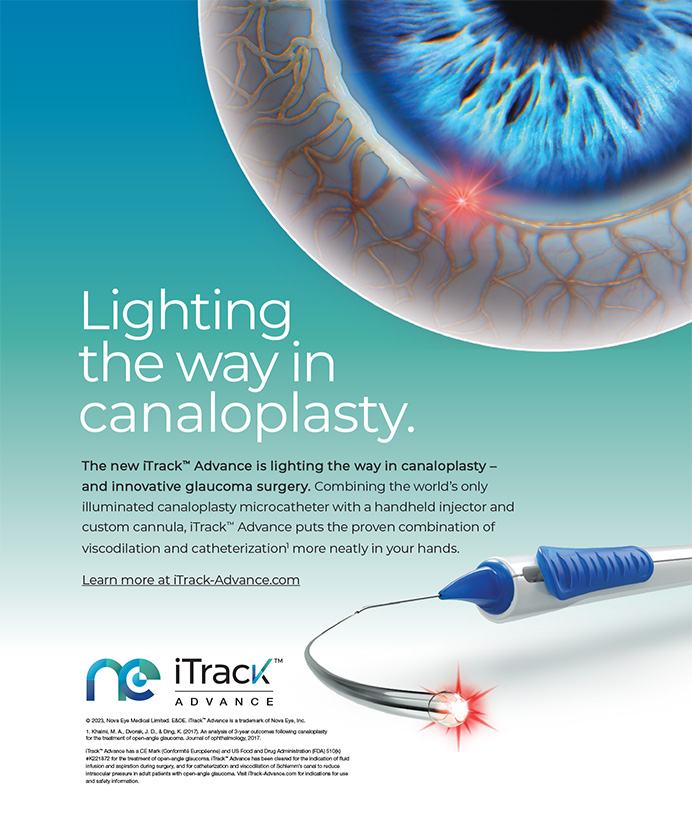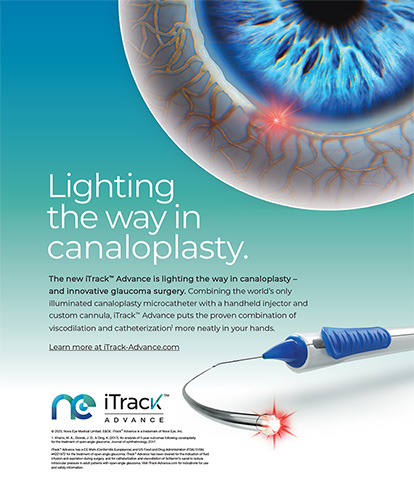Where do you see the world of ophthalmic product research and development headed during the next 10 years?
Research and development (R&D) in ophthalmology is rapidly changing. Clinically, our team will seek to resolve unmet needs as well as identify emerging needs. On a regulatory level, the FDA will become more or less comfortable with different approaches and changes. Financially, major commercial players will have new fundraising challenges, whether it is in the public markets that we are seeing today or in the changing venture community that is focusing on in-licensing later-stage assets that are closer to commercialization. We see this shift building momentum, as these later-stage assets are ultimately more cost-efficient and provide lower development risk.
With this bump in interest toward later-stage assets comes the opportunity for startup companies, physician entrepreneurs, small companies, and companies new to ophthalmology to enter the ophthalmic space and find success. The individuals, however, must have a keen awareness of the clinical, financial, and regulatory world around them. They must keep pace, be nimble, and be ahead of the changes, if possible. R&D looks to the horizon, and incomers take on the risk of a forward-thinking vision. Knowledge and awareness are the best means to mitigate that risk. Knowing the past, present, and future, along with using smart resources and advisors, supports a sage and, it is to be hoped, successful pathway forward.
These are the types of R&D initiatives we are seeing at Ora. Because we are integrated much earlier in the development cycle, we are able to build a complete, systematic package for the product and see it through from concept to market.
What is Ora?
Ora is a full-service ophthalmic contract research organization and product development firm that operates worldwide. We support a wide array of organizations, from individuals and startups to large, commercially focused pharmaceutical companies, as they efficiently and successfully bring products from concept to market. Our only therapeutic focus at Ora is ophthalmology. We work on all diseases of the eye, as we often say, “the whole eye from front to back and everything in between.” We believe the key to successfully moving a product through the pharmaceutical pipeline is to become involved early in the process to provide tailored regulatory, operational, and scientific support.
What unique strategies does Ora employ to assist early-stage development?
The clinical trial process can be lengthy and costly and often presents many challenges for even the most seasoned ophthalmic product developers. Implementing a developmental strategy and product profile early in the process is pivotal for success. For pharmaceutical products, we conduct a full assessment of the client’s compounds and analyze the pharmacology and data to make recommendations on the diseases to which the compound might be applicable. Our preclinical experts focus on delivering clinically relevant endpoints and data by selecting the indications that correctly match the compounds’ mechanism of action. We can then customize preclinical activities around a drug’s indication as well as its clinical significance to properly define metrics for value inflection. We also manage the efficiencies of our partners’ toxicology programs in order to help them move into the clinic as quickly as possible.
Becoming involved at the early stage of the developmental process allows us to provide expertise in clinical, regulatory, and program strategy; monitoring; medical writing; formulation/chemistry, manufacturing, and controls; drug delivery; strategic business planning; and tailored marketing, advertising, and commercialization solutions.
Can you explain the operational and regulatory components of Ora’s services and how they can lead to successful development?
Operational success is largely based on the enrollment of clinical trials; this means finding the appropriate patient population as well as the desired number of subjects for a clinical trial to be meaningful. Our team of recruitment specialists has spent years identifying thousands of qualified ophthalmic subjects across a full range of therapeutic areas. Our in-house database is organized by disease severity and state such as allergy, dry eye, glaucoma, cataracts, diabetic retinopathy, and wet and dry age-related macular degeneration. As a result, we can easily meet the recruitment needs of specific trials and study phases. We also work with our sites around the country and the world to actively maintain and recruit new subjects into their respective trial databases. This ensures that we have the necessary patient data and that we can enroll a new study in a short period of time. Our recruiting specialists use “block enrollment,” a process that enables us to recruit subjects prior to the trial’s start date as opposed to enrolling patients as they come through the door. When there are several sites and investigators taking part in a study who are waiting for patients to come in with a specific condition, the study can take years to complete.
Ora operates with a “feet-on-the-ground” approach to conducting clinical research: a process that we find to be more efficient and readily accessible than the site’s needing to have an extensive clinical research staff. Under the supervision of the principal investigator, our clinical team works in conjunction with site staff to conduct the studies. This is especially important for our block enrollment strategy, because most sites cannot see 30 to 50 patients in 1 day and require the additional support of our research associates.
To set a product up for regulatory success, study results must be organized and presented in a clear, concise manner. It is our belief that the quality of this presentation can make the difference in whether a drug ultimately obtains FDA approval. Ora’s regulatory writers are highly accomplished in a wide array of regulatory document preparation and filing, including protocols, investigational new drug applications, clinical study reports, 510(k)s, investigational device exemptions, and new drug applications.
What have been Ora’s contributions to the ophthalmic industry?
Our scientific expertise is the core of who we are. The organizational structure of the company is built around disease areas to maintain a high level of understanding and constantly improve upon the way we study those diseases. Additionally, we design and develop new methods and models for use in studying drugs, biologics, and small molecules for front-of-the eye as well as back-of-the-eye indications. We have primary methodologies for testing allergic conjunctivitis and dry eye that enhance the chances of success for our clients, reduce timelines, increase the statistical power, and, in the end, enable companies to make better decisions. For example, our conjunctival allergen challenge model has been responsible for the FDA’s approval of 17 anti-allergy compounds. In the dry eye arena, we have developed a controlled adverse environment that exacerbates the signs and symptoms of dry eye, thus providing a standardized approach to studying investigational treatments.
Matthew Chapin is vice president of corporate development at Ora.
Eliot Lazar, MD, is principal of ElCon Medical in Buffalo, New York, a consulting firm that provides an end-user medical and surgical perspective on medical device market needs and requirements, medical technology trends and developments, and funding strategies.
Donna Welch, RN, BSN, is senior vice president and chief operating officer at Ora.


